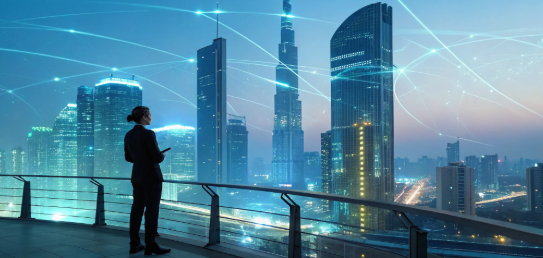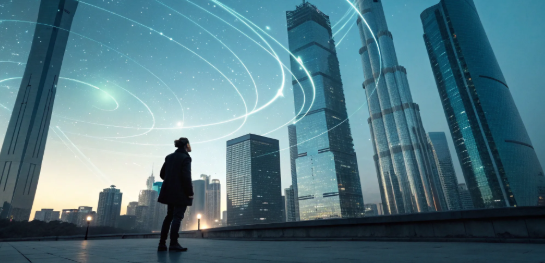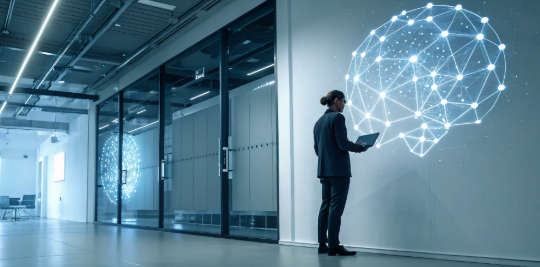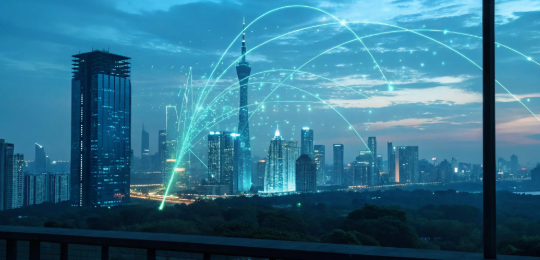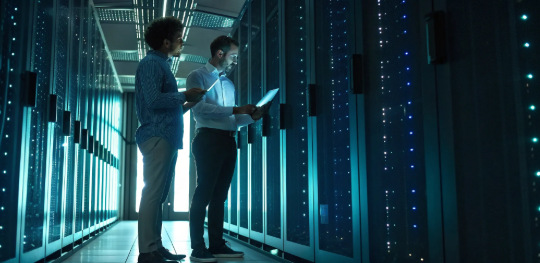The conversation around artificial intelligence often feels futuristic, but when it comes to hiring, the future is already here. Companies are no longer just talking about using AI; they are actively using it to find and attract the best people. For businesses trying to hire specialized professionals in fields like machine learning and data science, this isn't just a trend—it's becoming a competitive necessity. Using AI talent acquisition means leveraging smart technology to streamline everything from sourcing candidates to screening applications. It allows you to move faster and make more data-driven decisions in a crowded market. In this article, we’ll demystify the technology, explore the real-world benefits, and show you how to integrate these powerful tools into your own hiring process.
Key Takeaways
- Let AI handle the busywork so your team can focus on people: Use AI to automate high-volume tasks like screening resumes and scheduling interviews. This frees up your recruiters to concentrate on building relationships, assessing cultural fit, and making strategic hiring decisions.
- Choose your tools with purpose and a focus on fairness: Start by identifying your biggest hiring challenges, then select AI solutions that solve those specific problems. Prioritize tools that are transparent about their algorithms and designed to reduce, not replicate, human bias.
- Measure what matters to prove the value of your strategy: Define clear KPIs like time-to-hire and quality of hire before you begin. Tracking these metrics will show you exactly how AI is improving your process and help you make smarter, data-backed adjustments over time.
What is AI Talent Acquisition?
At its core, AI talent acquisition is the use of artificial intelligence to help find, attract, and hire new employees. It’s not about replacing the human element of recruiting but rather enhancing it with powerful tools. Think of it as giving your hiring team a major upgrade, allowing them to work smarter, faster, and more effectively. By handling the repetitive, data-heavy tasks, AI frees up recruiters to focus on what they do best: connecting with people and making strategic decisions. This approach is reshaping how companies build their teams, especially in specialized fields like AI and data science.
The Tech Behind AI Recruitment
The magic behind AI recruitment isn't a single piece of technology. It's a combination of powerful tools, primarily driven by Machine Learning and Natural Language Processing (NLP). Machine learning algorithms analyze vast amounts of data to identify patterns, helping to predict which candidates might be a great fit based on the traits of past successful hires. NLP allows the software to understand and interpret human language, making it possible to screen resumes, analyze job descriptions, and even power chatbots that interact with candidates. We're seeing a move from simple automation to more advanced "agentic AI" systems that can manage significant parts of the hiring process on their own.
How AI Changes the Hiring Process
The most immediate change AI brings to the hiring process is automation. It takes over time-consuming tasks like sifting through hundreds of resumes, sourcing potential candidates from various platforms, and scheduling interviews. This efficiency is a game-changer, but the real value is that it frees up your team to focus on the human side of recruiting. Instead of getting bogged down in administrative work, they can spend more time building relationships with top candidates and conducting meaningful interviews. This allows your team to focus on strategic hiring solutions that find the right fit, faster. Ultimately, AI helps you make smarter, data-backed decisions, reducing the risk and cost associated with a bad hire.
Why Use AI in Your Hiring Process?
Integrating AI into your hiring process isn't about replacing your team; it's about empowering them. Think of it as giving your recruiters a powerful assistant that handles the repetitive, time-consuming tasks, so they can focus on what they do best: connecting with people. By automating key functions and providing deep analytical insights, AI helps you build a faster, smarter, and more human-centric approach to finding the right talent. The goal is to make your process more effective, not less personal.
Save Time and Increase Efficiency
Let's be honest: a lot of recruitment work is repetitive. Sifting through hundreds of resumes, posting jobs across multiple boards, and scheduling interviews can consume a huge portion of your team's day. This is where AI makes an immediate impact. It can automate these high-volume tasks, screening candidates against your job criteria in seconds and handling the back-and-forth of scheduling. This frees up your recruiters to spend more time engaging with promising candidates, understanding their career goals, and building the relationships that lead to great hires. By letting AI handle the administrative load, you can streamline your hiring process and focus your energy on strategic decision-making.
Create a Better Candidate Experience
In a competitive market, the candidate experience is everything. A slow, impersonal, or confusing application process can cause you to lose top talent before you even speak to them. AI helps you create a more responsive and engaging journey for every applicant. AI-powered chatbots can provide instant answers to common questions 24/7, so candidates aren't left waiting. The technology can also help you deliver personalized communications and updates, making applicants feel valued rather than like just another number. For specialized roles, this level of attention is critical for attracting top AI engineers and data scientists who have many options. A smooth, tech-enabled process signals that you're a modern, efficient organization.
Make Smarter, Data-Backed Decisions
Hiring has traditionally relied heavily on gut feelings, but AI introduces a new level of objectivity. These tools can analyze data from past hires to identify the skills and attributes that predict long-term success at your company. This gives you powerful, data-driven insights to support your decisions. AI can also help you spot patterns and identify potential skills gaps within your organization, allowing you to build talent pipelines proactively. By grounding your strategy in data, you can reduce unconscious bias and increase the quality of your hires. This approach ensures you're not just filling a role but making a strategic investment in your company's future.
The Challenges and Ethics of AI in Hiring
Adopting AI in your hiring process is exciting, but it’s not a simple plug-and-play solution. Like any powerful tool, it comes with its own set of challenges and ethical questions that you need to address head-on. Being proactive about these issues isn't just about compliance; it's about building a fair, effective, and trustworthy hiring system that attracts the best talent. Thinking through these challenges from the start will help you use AI responsibly and get the most out of your investment in your team and technology.
How to Overcome Bias in AI Tools
Let's be real: AI systems can be biased. This usually isn't intentional, but happens when the AI learns from historical hiring data that reflects existing human biases. If past hiring decisions favored a certain demographic, the AI might learn to replicate that pattern, leading to unfair hiring practices that filter out qualified, diverse candidates. To counter this, you need to be diligent. Ensure any AI tool you use is trained on large, diverse, and representative datasets. It's also critical to regularly audit your AI's performance to catch and correct any skewed outcomes. The goal is to use AI to reduce human bias, not introduce a new, automated version of it.
Protect Candidate Data and Privacy
When you collect resumes and applications, you're handling a lot of sensitive personal information. Using AI adds another layer of complexity to data privacy. Candidates deserve to know how their information is being used, stored, and analyzed by automated systems. Transparency is key. Be upfront in your privacy policy and communications about your use of AI. When choosing a vendor, prioritize those with strong security measures and a clear commitment to data privacy and security. This builds trust with candidates and ensures you’re handling their data with the care it deserves, which is non-negotiable in today's world.
Find the Right Balance Between AI and People
One of the biggest misconceptions about AI in recruitment is that it’s here to replace recruiters. The reality is that AI should work with your team, not instead of them. Think of AI as a powerful assistant that handles the repetitive, data-intensive tasks, like screening thousands of resumes. This frees up your human recruiters to focus on what they do best: building relationships, assessing cultural fit, and using their intuition to make final decisions. The most successful hiring strategies find a sweet spot where AI-driven efficiency supports the essential human touch, especially for highly specialized roles in AI Engineering.
How to Use AI in Recruitment Today
So, you’re ready to bring AI into your hiring process, but where do you actually start? The good news is you don’t need a massive overhaul to begin seeing the benefits. Integrating AI can be a step-by-step process that starts with your most time-consuming tasks. Think of it as giving your recruitment team a powerful assistant, one that can handle the repetitive, high-volume work so your people can focus on what they do best: building relationships with candidates and making strategic hiring decisions. This shift is crucial. When recruiters are freed from administrative burdens, they become true talent advisors to the business.
The key is to identify the biggest bottlenecks in your current workflow. Is it the mountain of resumes you receive for every open role? Is it keeping candidates engaged throughout a long hiring cycle? Or is it making sure you’re choosing someone who will truly succeed long-term? AI offers practical tools that address each of these challenges directly. By implementing AI strategically, you can create a more efficient, fair, and effective hiring process that attracts the best AI and ML talent. Let’s look at a few concrete ways you can put AI to work right now to streamline your operations and improve your quality of hire.
Screen Resumes and Source Candidates Faster
If your team spends hours sifting through resumes, this is the perfect place to start. AI tools can scan hundreds of resumes in minutes, instantly identifying candidates who match the specific criteria for your open role. This isn't just about matching keywords; modern AI can understand context, skills, and experience to create a high-quality shortlist for your recruiters. By automating this initial screening, you free up your team to spend less time on administrative tasks and more time engaging with the most promising candidates. This efficiency is a core part of our hiring solutions, allowing us to connect companies with top-tier professionals faster than ever.
Use AI Chatbots for Better Communication
In a competitive job market, a great candidate experience can make all the difference. AI-powered chatbots are a simple way to improve communication and keep potential hires engaged. These bots can be integrated into your careers page to provide instant, 24/7 answers to common questions about job openings, company culture, or the application process. According to SHRM, this immediate feedback significantly improves the candidate experience. Instead of waiting days for an email response, applicants get the information they need right away, making your company seem more responsive and organized. This keeps top talent in your pipeline and ensures no one feels left in the dark.
Predict Hiring Success with Analytics
Making the right hire goes beyond finding someone who looks good on paper. You want to find a candidate who will thrive in their role and contribute to your company for years to come. This is where predictive analytics comes in. AI can analyze data from past successful hires—like their skills, experience, and even performance reviews—to build a model of what a great candidate looks like for a specific role. This helps you make smarter, data-backed decisions by predicting which applicants are most likely to succeed. It also allows you to proactively identify skills gaps on your team and build talent pipelines for future needs, ensuring you’re always a step ahead. This is the kind of deep insight that powers modern data science and analytics in recruitment.
How to Add AI to Your Hiring Strategy
Bringing AI into your recruitment process is more than just adopting new software; it's about making a strategic shift in how you find and attract top talent. When done thoughtfully, AI can streamline your workflow, improve candidate interactions, and lead to better hiring outcomes. But jumping in without a plan can lead to confusion and wasted resources. The goal isn't to replace your team but to give them powerful tools that handle repetitive tasks, freeing them up to focus on what they do best: connecting with people.
A successful AI integration starts with a clear understanding of your current challenges and a commitment to using these tools ethically and effectively. Think of it as building a new capability within your organization. You need to know what you want to achieve before you start looking at solutions. Are you trying to shorten your time-to-hire? Widen your talent pool? Reduce unconscious bias in screening? Answering these questions first will guide your entire strategy. With the right approach, you can build a hiring process that is faster, smarter, and more fair for everyone involved. Let's walk through the practical steps to make that happen, ensuring your strategy is built on a solid foundation from day one. This is how you move from simply using AI tools to creating truly intelligent hiring solutions.
Start by Reviewing Your Current Process
Before you even look at a single AI tool, take a close look at your existing hiring workflow. A thorough audit of your current process helps you pinpoint exactly where AI can make the biggest impact. Where are the bottlenecks? Does your team spend too much time manually screening resumes? Are qualified candidates dropping out of the funnel at a specific stage? Identifying these pain points is the first step. This isn't about finding fault; it's about finding opportunities. By understanding where you can add the most value, you can ensure you're investing in technology that solves real problems for your team and your candidates.
Choose the Right AI Tools for Your Team
Once you know your needs, you can start exploring the right tools. The market is full of options, from AI-powered sourcing platforms to chatbots and predictive analytics software. The key is to select tools that align with your specific goals. When evaluating options, prioritize platforms that are transparent about how their algorithms work and are actively designed to mitigate bias. High-quality data and ethical design are non-negotiable. Choosing the right tool is less about having the most features and more about finding the perfect fit for your team's workflow and company values.
Follow Best Practices for Ethical AI
Using AI responsibly is critical for building trust with both your team and your candidates. The most effective AI strategies keep humans at the center of the process. It's essential to use AI in a way that enhances fairness, rather than creating new barriers. This means ensuring there is always human oversight to review AI-driven recommendations and make the final call. Your team's judgment and expertise are irreplaceable. By combining the efficiency of AI with the empathy and critical thinking of your recruiters, you create a system that is not only powerful but also fair and accountable. This balanced approach is fundamental across all specialized fields, from AI Engineering to Data Science.
How to Measure Your Success with AI
Bringing AI into your hiring process is a great first step, but the real value comes from understanding its impact. You wouldn't launch a marketing campaign without tracking its performance, and the same logic applies here. Measuring your success with AI isn't just about checking a box; it's about making sure the technology is actually helping you achieve your core talent acquisition goals. Are you hiring better candidates faster? Is your team more efficient? Are you creating a positive experience for applicants?
Answering these questions requires a clear framework for measurement. By setting specific goals and continuously refining your approach based on data, you can turn AI from a shiny new tool into a strategic asset that delivers a real return on investment. This process ensures you’re not just automating tasks, but truly improving the way you find and hire the talent that will drive your business forward. It’s about being intentional and using the insights AI provides to get smarter with every hire.
Define Your Key Performance Indicators (KPIs)
Before you can measure success, you need to define what it looks like for your organization. Start by establishing clear Key Performance Indicators (KPIs) that align with your hiring objectives. AI tools are fantastic at gathering data, giving you the insights needed to track these metrics effectively. Common KPIs in talent acquisition include time-to-hire, cost-per-hire, quality of hire (often measured by new employee performance), and candidate satisfaction scores.
Choosing the right KPIs helps you see exactly where AI is making a difference. For example, if your goal is to speed up the process, you’ll want to watch your time-to-hire metric closely. If you’re focused on finding the best fit, tracking quality of hire is essential. These data-driven insights allow you to demonstrate the value of your hiring solutions and make informed adjustments.
Continuously Improve and Refine Your Strategy
AI is not a "set it and forget it" solution. Think of it as a dynamic tool that requires ongoing attention to perform at its best. One of the biggest benefits of AI is that it automates repetitive tasks, which frees up your team to focus on more strategic work—like refining your hiring strategy. Use this extra time to analyze the performance data from your AI tools and look for areas of improvement.
A critical part of this process is ensuring fairness and mitigating bias. It's essential to regularly review your AI's outputs and the datasets it's trained on to make sure you aren't accidentally filtering out qualified, diverse candidates. By continuously monitoring performance and seeking feedback, you can refine your AI models to make them more accurate and equitable over time, leading to a stronger, more effective recruitment process.
Common Myths About AI in Recruitment
With all the buzz around artificial intelligence, it’s easy to get lost in the hype. You’ll hear claims that AI is a silver bullet for all hiring challenges, or on the flip side, that it’s a job-stealing robot that will make recruiters obsolete. The truth is somewhere in the middle. AI is a powerful tool that is fundamentally changing how we find and hire talent, but it’s not magic. It’s more of a co-pilot than an autopilot, designed to handle the heavy lifting so your team can focus on what they do best.
Understanding what AI can and can’t do is the first step to using it effectively. It’s not just a passing trend; it’s a significant shift that streamlines the hiring process by automating time-consuming tasks like screening resumes and scheduling interviews. This shift allows your hiring team to move from being reactive administrators to proactive talent advisors. By separating fact from fiction, you can build a strategy that uses technology to enhance, not replace, the human element of recruitment. Our hiring solutions are designed to help you find that perfect balance, using smart tools to connect you with the right candidates.
Myth vs. Reality: What AI Can (and Can't) Do
Let's clear up a few common misconceptions so you can feel confident about how AI fits into your hiring process.
-
Myth: AI will make human recruiters obsolete. Reality: It’s highly unlikely AI will ever completely replace recruiters. Instead, AI handles the repetitive, high-volume tasks, allowing recruiters to be more strategic. Think of it as an assistant that sorts through thousands of resumes so your team can spend their time building relationships with top candidates and assessing nuanced qualities like cultural fit—things that require a human touch.
-
Myth: AI eliminates bias in hiring. Reality: This is a critical one. AI tools are trained on data, and if that data contains historical biases, the AI can learn and even amplify them. The impact of AI on fairness depends entirely on how it's built and used. Responsible AI requires constant monitoring and human oversight to ensure it’s creating a more equitable process, not making an old problem worse.
-
Myth: AI makes the final hiring decision. Reality: AI should work with humans, not for them. These tools are excellent at providing data-driven recommendations and identifying patterns you might miss. However, the final decision should always rest with a person. Human judgment, intuition, and direct interaction are still essential for making a great hire.
What's Next for AI in Talent Acquisition?
The world of AI is moving fast, and its impact on hiring is only getting bigger. The tools and strategies we use today are just the beginning. Looking ahead, we can expect AI to become an even more integrated and intelligent partner in finding the right people for the right roles. This isn't about replacing the human touch; it's about enhancing it. Let's look at the key trends shaping the future of talent acquisition and what it means for the role of the recruiter.
New Technologies and Trends to Watch
Get ready for AI to take on more complex responsibilities. We're seeing the rise of "Agentic AI," where systems can independently manage entire chunks of the hiring process, from drafting job descriptions to initial candidate screening. The focus is also shifting from reactive to proactive sourcing. Instead of just waiting for applications, AI tools analyze vast amounts of data to identify skilled professionals who might be a perfect fit, even if they aren't actively job hunting. This isn't a distant future, either. With most companies expected to adopt AI for recruiting soon, these advanced capabilities will quickly become the standard for staying competitive in the talent market.
How the Recruiter's Role is Changing
With AI handling more of the repetitive, time-consuming tasks, what does that mean for recruiters? It means their role is becoming more strategic and human-focused than ever. By automating tasks like screening resumes and scheduling interviews, AI frees up recruiters to concentrate on what they do best: building relationships, understanding a candidate's unique story, and advising hiring managers. The goal isn't to replace human expertise but to augment it. Recruiters, armed with data-driven insights from AI, can make more informed decisions and spend their time on high-impact activities. This partnership between human intuition and machine intelligence is where the real magic happens, leading to better hires and a stronger company culture.
Get Your Organization Ready for AI
Bringing AI into your recruitment process is more than just adopting new software—it’s about preparing your team and your company culture for a new way of working. When you lay the right foundation, you set your entire organization up for success. It means shifting from traditional methods to a more strategic, data-informed approach to finding the right people. This preparation focuses on two key areas: building a culture that truly values data and training your team to work effectively and ethically alongside AI tools. By focusing on these pillars, you can ensure a smooth transition and get the most value out of your investment in AI technology.
It's about creating an environment where technology empowers your people, rather than replaces them. The goal is to integrate AI seamlessly so that it becomes a natural part of your workflow, helping your recruiters make better, faster, and fairer hiring decisions. This isn't an overnight change, but a deliberate process of building new habits and skills across your talent acquisition function. Getting this right from the start will make all the difference in how well you can attract and retain top-tier talent in a competitive market.
Build a Culture That Values Data
To make AI work for you, your organization needs to see data as a strategic asset. AI recruitment tools are powerful because they run on data, so fostering a culture that prioritizes data-driven decisions is the first step. This means encouraging your hiring teams to look beyond gut feelings and rely on the insights that data provides. When your culture values data, you can use AI to do some incredible things, like analyzing workforce information to identify skills gaps or even predict your future talent needs. This allows you to proactively build talent pipelines instead of scrambling to fill roles as they open up. It’s a fundamental shift that turns your hiring process from a reactive function into a forward-thinking, strategic advantage.
Train Your Team to Work with AI
Introducing any new technology requires training, and AI is no exception. Your team needs to understand not just how to use the tools, but how to partner with them. The goal of AI is to automate repetitive tasks, which frees up your recruiters to focus on the human side of hiring—building relationships, assessing cultural fit, and selling candidates on your vision. Training should cover the practical side of using the software, but it’s crucial to go deeper. Your team must also understand the ethical implications of using AI in hiring. This includes learning how to mitigate bias and ensure the hiring process remains fair and transparent. When your team is well-trained, they become confident partners with AI, using it to make smarter decisions while keeping the process human-centric.
Related Articles
- AI & Machine Learning Staffing | How to Recruit and Retain Top Talent
- AI Talent Wars: Current Trends and Strategies in Machine Learning Recruitment
- Machine Learning Recruitment Agency: The Definitive Guide to Finding Elite AI Talent
- AI Staffing Solutions: Building Successful ML Teams | People In AI
Frequently Asked Questions
Will AI take over my recruiter's job? Not at all. Think of AI as a powerful assistant that elevates your recruiter's role, not eliminates it. AI is designed to handle the repetitive, high-volume tasks like sifting through hundreds of resumes or scheduling initial calls. This frees up your team to focus on the work that truly requires a human touch, like building genuine relationships with top candidates, assessing cultural fit, and making strategic hiring decisions. The goal is to make your recruiters more effective, not obsolete.
How can I start using AI without a huge budget or a complete overhaul of my process? You don't need to transform your entire hiring process overnight. The best way to start is by identifying your single biggest bottleneck. If your team is drowning in applications, begin with an AI-powered resume screening tool. If candidates complain about slow communication, a simple chatbot on your careers page can make a huge difference. Starting small with a tool that solves a specific, tangible problem is a cost-effective way to see immediate benefits and build momentum.
How do I prevent AI from making our hiring process biased? This is a critical question, and the responsibility falls on us to use these tools ethically. AI learns from the data it's given, so if your past hiring data reflects unconscious bias, the AI can adopt it. To prevent this, you must be proactive. Always choose vendors who are transparent about how their algorithms work and what data they use. Most importantly, maintain human oversight. AI should provide a shortlist or recommendations, but the final, nuanced decisions must always be made by your team.
Will using AI make the hiring process feel cold and impersonal for candidates? It's a common concern, but when used correctly, AI can actually make the experience more personal and responsive. Think about it from the candidate's perspective. An AI chatbot can provide instant answers to their questions 24/7, so they aren't left waiting for days. Automated updates can keep them informed at every stage, so they never feel like their application disappeared into a black hole. This efficiency allows your recruiters to spend more quality time having meaningful conversations with the most promising applicants.
What's the real difference between AI and the applicant tracking systems (ATS) we already use? It's a great question because the difference is significant. A traditional ATS is essentially a digital filing cabinet. It stores applications and helps you filter them based on simple keyword matches. AI-powered tools are much more intelligent. They use machine learning and natural language processing to understand context, infer skills that aren't explicitly listed, and even predict which candidates are most likely to succeed based on past data. An ATS manages applicants; an AI system helps you discover and evaluate talent.






